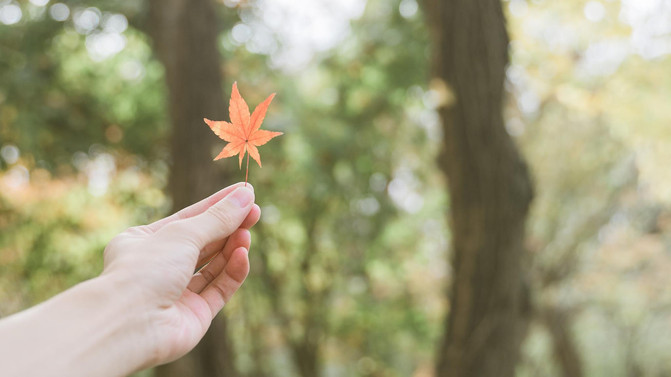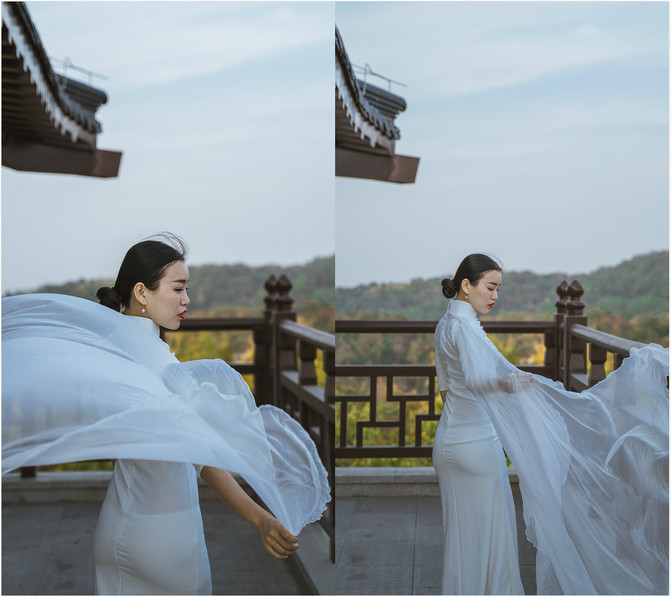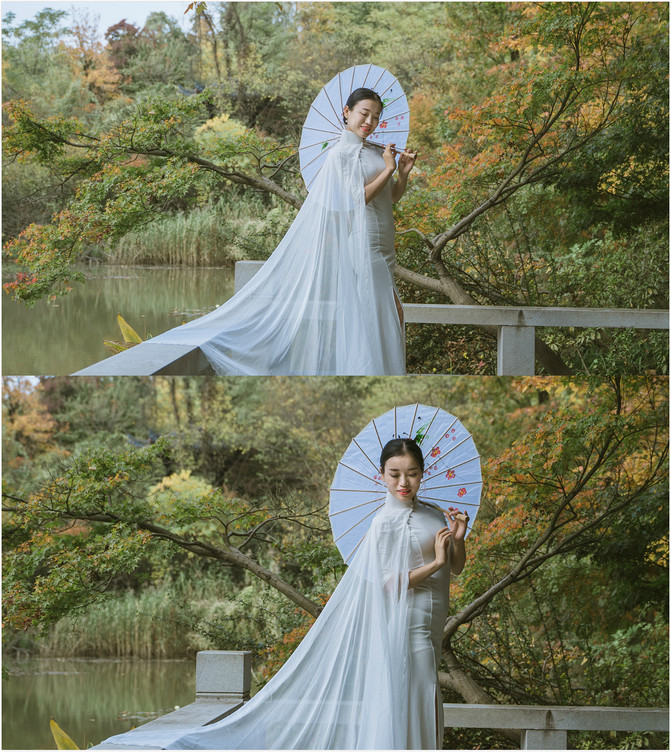Jinling in the golden autumn, looking for the most beautiful autumn scenery on Qixia Mountain in Nanjing
Regarding autumn, what does it look like?
I think it's cool, it's the one that walks out of the door after taking a shower with a touch of coolness but very comfortable.
It is in the park where the fallen leaves return to their roots, and the entire picture is all orange and yellow.
In autumn, I came to Nanjing, Jinling and encountered the autumn scenery of Qixia Mountain.


Why go to Kyoto to see the red leaves? Nanjing Qixia Mountain gives you the same scenery
Regarding Qixia Mountain, the biggest highlight is its autumn.
If you only choose one season to come to Qixia Mountain, it must be autumn.

Qixia Mountain is located in Qixia District of Nanjing City. In ancient times, it was called Shashan and known as the "No. 1 Mingxiu Mountain in Jinling."
[Transportation]
Take bus No. 326 to Qixia Station and walk 2200 meters to Qixia Mountain
[Tickets]
Regular ticket: Weekday ticket 25 RMB/Red Maple Festival 40 RMB (January 1-December 31 Monday-Sunday)
People over the age of 70 visit free of charge.
【Tips:】
The Red Leaf and Red Maple Festival in Qixia Mountain is probably from October to December (the peak season is from mid-November to early December);
Tips: Before 6:30 a.m., Qixia Mountain is open for free for morning exercises for nearby residents, so you can get in and out of the morning for free.
[Opening Hours]
07:00 - 17:30; ticket sales stop time: 17:00

The red leaf season is approaching, and the wind chimes on Qixia Mountain are slowly starting to hang up.
Write your little wishes and blessings, hang them on the treetops,
The autumn wind blows and cools, and the wind chimes sound quietly.

The best season in Qixia Mountain is mid-November, and the maple leaf period is about 2 weeks.
When the weather was better the week before, you might as well take a friend wearing Hanfu to take a group of photos.
Autumn rain will slowly begin to fall in the next week, but the moist maple leaves falling on the ground are still beautiful in early winter in the south.


The peaks of Qixia Mountain are not high, but the peaks are grouped together,
There are three peaks in total, surrounded by mountains on three sides and facing the Yangtze River in the north. The highest peak, Sanmao Palace, is also called Fengxiang Peak, with an altitude of 286 meters.
Although it is not high, the mountains are huge and there are many places to visit. If you want to have an in-depth tour, it still takes a whole day.
But choose a quiet weekend to wander here. Walking and patting will give people a very comfortable feeling and won't be crowded.



Maple leaves turn red and Shanshan falls is a long and beautiful process.
It goes from emerald green to dark green to early yellow, and finally turns orange red, as if you are following this leaf,
Watch the flowers bloom and fall, and the seasons change.

There is a drum tower under construction on the mountain. After climbing it, you can see the entire city of Wuxi.
The scenery here is endless and can be said to be a great viewing platform.


A whole mountain has red leaves alternating with maple leaves, and a pavilion by the lake,
When I saw this scene, my first feeling was-Kyoto.
Such a scene is simply like the ancient capital of Kyoto. Nanjing has such a place to admire maple leaves, so why go to Japan?


The young lady who was traveling with her clothes put on a cloak and looked very much like Zhao Yumo, the heroine of the Thirteen Hairpins of Jinling.
Standing in the pavilion with an umbrella in hand, the autumn feeling here is strong.

At the moment when the leaves are not all red, you can create a layered aesthetic feeling.
The most interesting moment is the alternation of red and green, and even the half-green and half-red ones are going on.

Careful observation shows that Qixia Mountain's LOGO logo design is ingenious,
The wooden character "Qi" on Qixia Mountain is represented with a red leaf pattern, which also represents the biggest highlight of coming to Qixia Mountain.
At the same time, the word "West" on the right represents the mountains of Qixia Mountain.

Red Maple Valley is the place closest to autumn in Qixia Mountain. When late autumn approaches,
This has become the most "reddest" place. Whether it is red leaves, it is also the most popular place in the entire scenic area.


At this moment in autumn, more and more young people are choosing to change into Han costumes and come here to shoot.
The antique Jinling is matched with the antique Han costumes, and there is no sense of discord at all.


In addition to the autumn scenery of Qixia Mountain, ancient books can also be restored here
Many people only have an impression of Qixia Mountain in autumn with maple leaves and red leaves.
In fact, Qixia Mountain also has a historic site Qixia Temple, as well as the Southern Dynasty stone carving Thousand Buddha Rock and the Sui Dynasty relic Pagoda.
Even the easternmost "Dunhuang ruins" that are still being discovered, Qixia Mountain not only has beautiful scenery, but also has cultural heritage.

The red leaves at the entrance of Qixia Temple are red, and the red dyed in autumn complements the red gate.

Qixia Temple is one of the four major maple attractions in China, and when you walk on the road, you will find that there is more than one type of maple leaf here.
Most of them are mainly maple, including red maple, chicken claw maple, triangular maple, feather maple, beech tree, pistachia, etc.
In late autumn every year, the entire mountain at the entrance and the mountains are covered with red and the layers of forests are dyed.


In front of Mingjing Lake, there is also a poem inscribed by the Emperor Qianlong Dynasty placed here.
Because during Qianlong's six voyages to Jiangnan and five voyages to Yanziji, he lived in the Qixia Mountain Palace in Nanjing five times.
Even the emperor loved this place so much by writing poems and lyrics here, let alone us Pingming people.
You will never get tired of watching the autumn scenery here many times.

Qixia Temple is quiet and peaceful. In the noisy city, it is still a quiet place.
Qixia Temple was an ancient temple in the Southern Dynasties. It was originally called Qixia Jingshe. It was named Shashan because there were many medicinal plants on the mountain that could be cultivated.
Although Qixia Temple looks grand in scale and has extraordinary style in its temples, it has also experienced ruthless wars.
Now that the world is peaceful, tranquility and comfort have been restored here.

The thousand-year-old ginkgo tree above the main hall is very special. The ginkgo trees here do not grow fruit.
Because this is a male ginkgo tree, but this is the first time I have heard such a statement.



Speaking of the war that Qixia Temple has experienced, it has still stood for more than a hundred years in the wind and rain, including the Buddhist Sutra Tower here.
There are nearly 10,000 books placed in the Buddhist Sutra Building here, but due to age, the pages of the books have begun to become dilapidated.
Some of them automatically break due to time, some are caused by humidity, and some are even caused by being bitten by mice.
So here, a sacred task of "repairing ancient books" has been launched.
Including the monks here and many volunteers who came here to help.

Restoring ancient books is a matter of slow work, because the paper used in these ancient books is different from today,
Some are rice paper and some are bamboo paper. Different materials are not easy to repair.
Moreover, this still requires calm down and slowly repair it, and operation bit by bit.
This matter cannot be rushed because there are too many books. If all of them are to be repaired, it may take decades.
So this is also a very matter of cultivating patience. You can cultivate as much as you can. This is a very long-term thing.
It is also a very valuable and meaningful thing.

The weather is just right now, and the sun shines into the window, making the rice paper bright and beautiful.
People who work hard are more beautiful. I like the staff and volunteers here.

Another interesting experience is "woodblock printing",
Apply lacquer with a carved abrasive tool, and use rice paper to smooth and press it, and a painting will appear.
Such antiquities have become fewer and fewer in today's rapid development.
But as cultural traditions and heritage, these things should not disappear.

Walk around Qixia Mountain and you will find many classical buildings, including the stupa, the Jade Buddha Tower, the Thousand Buddha Rock, etc.



Taking advantage of the warm sun in early autumn, we walked into a place full of literature, art and ancient charm,
Slow down your hasty pace and sit in this grass where all the autumn leaves have fallen,
Look at the flowers, look at the trees, look at the leaves, and look at this fleeting autumn beauty.
Previous Article:Visiting Jinling in the misty rain
Next Article:Nanjing People Look at Nanjing--T80 of Characteristic Parks
